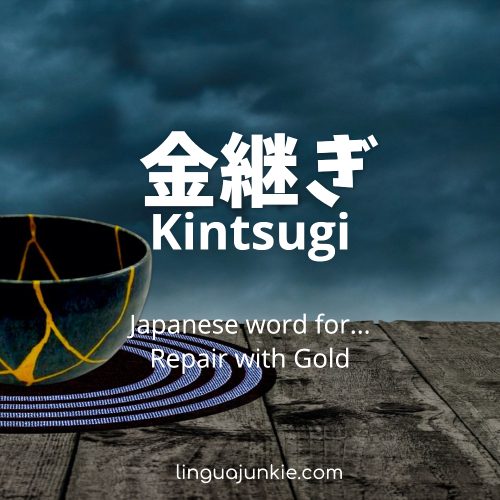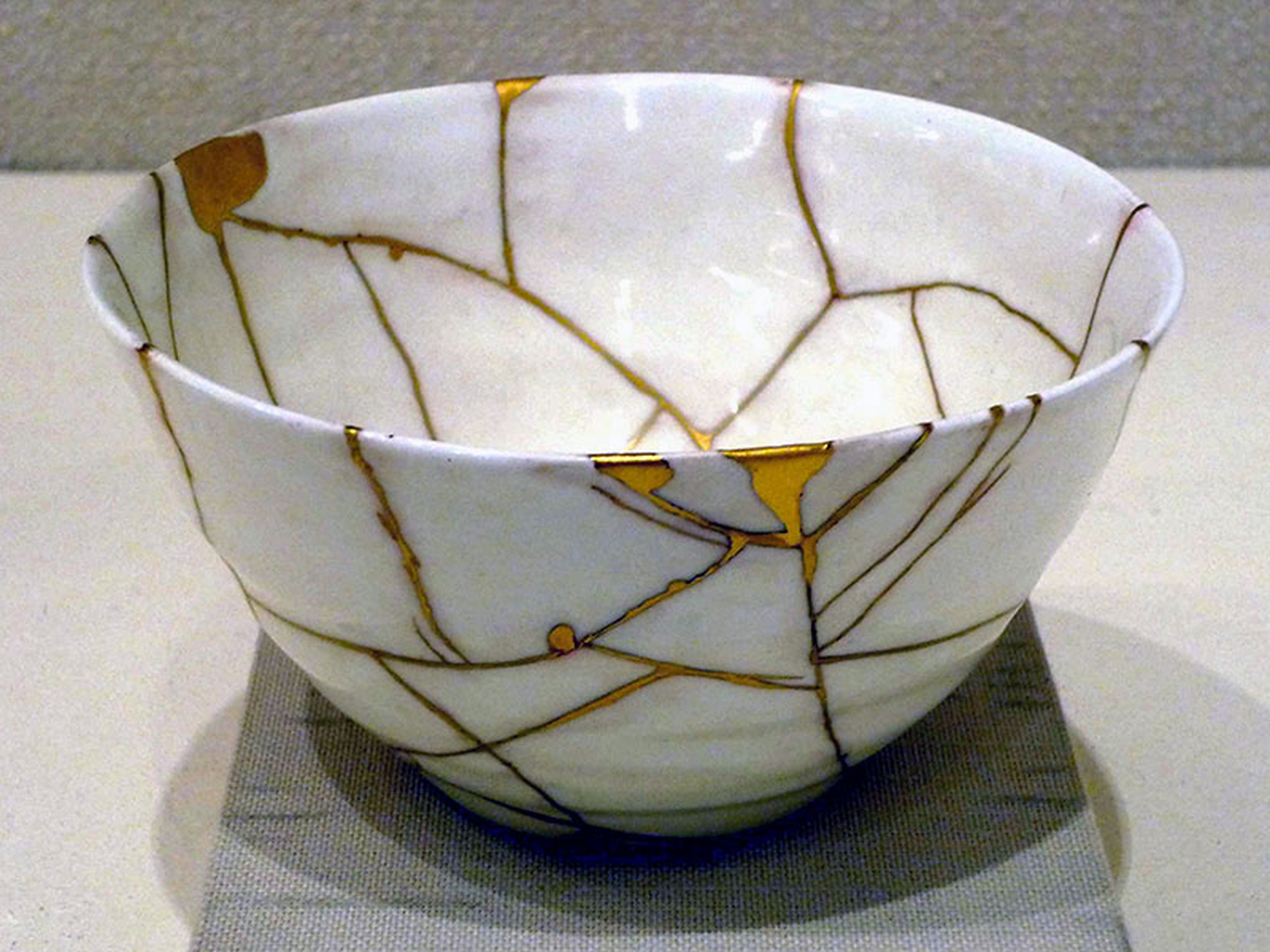

So, here’s God’s integrated illustration of Gospel principles in our midst! Kintsugi ( the concept of highlighting or emphasizing imperfections) and wabi-sabi ( finding beauty in imperfection and seeing the value in worn objects) celebrate seeing singular beauty in something utterly broken and deemed worthless by the world. Like this quote by Ernest Hemingway, “the world breaks everyone and afterward many are strong at the broken places,” the broken thing is not only more beautiful it is actually stronger too! The gold lines create a completely new look for the bowl: one that is enhanced by the beauty of the gold lines running along it’s broken places. Kintsugi honors the effort given to put broken things back together while emphasizing rather than hiding the broken places. The picture at the top of the devotional is a broken piece of pottery repaired with the kintsugi method. By repairing broken ceramics it’s possible to give a new lease on life to pottery that becomes even more refined thanks to its “scars”. Wikipedia states that Kintsugi (金継ぎ, “golden joinery”) “is the Japanese art of repairing broken pottery by mending the areas of breakage with lacquer dusted or mixed with powdered gold, silver, or platinum.” Stefano Carnazzi writes that “kintsugi teaches that broken objects are not something to hide but to display with pride. Wabi-sabi also embodies grace toward the imperfect object by the way that person interacts with it. To discover wabi-sabi is to see the singular beauty in something that may first look decrepit and ugly.” And Andrew Juniper notes, “If an object or expression can bring about, within us, a sense of serene melancholy and a spiritual longing, then that object could be said to be wabi-sabi.”ĭo you see it? This Gospel idea, like the story of The Velveteen Rabbit, expresses that worn things have intrinsic value and this runs counter to our disposable culture. It celebrates cracks and crevices and rot and all the other marks that time and weather and use leave behind. Broadly, wabi-sabi is everything that today’s sleek, mass-produced, technology-saturated culture isn’t. Wabi-sabi (侘寂) is, as Robyn Griggs Lawrence writes: “.is the art of finding beauty in imperfection and profundity in earthiness, of revering authenticity above all. Two wonderful examples from another culture that God uses to demonstrate what God’s grace looks like in our lives are wabi-sabi and kintsugi. I also believe that this Good News is so good that God takes every opportunity to illuminate it throughout the world in a myriad of ways. He chose to forgive our imperfections and to establish a reconciled relationship with us based upon his own standard of perfection: grace. Through His life, death, and resurrection Jesus Christ epitomized the embrace of imperfect people. In contrast to us humans, God’s perspective is radically different.

Although it can be subtle at times, living under such expectations is soul-draining and anxiety producing. We’ve all experienced firsthand how this works: when it comes to work, or intelligence, or physical appearance, our culture sets unattainable standards of perfection and people are quick to judge others for missing the mark. It seems to me that humans throughout history have been quick to judge while slow to forgive. I also think this throw-away philosophy extends beyond electronics products to people as well. I believe this disposable mentality is closely tied to our culture’s obsession with perfectionism. The cracked-screen-watch sits in a drawer in my house to this day. I took it to the Apple Store and the associate said to repair it would cost almost as much as the original cost of the watch. I think of an experience I had when a two-and-a-half-year-old apple watch was dropped, and the screen cracked. In fact, many of the products I buy off store shelves appear to be designed this way. I’ve found in America that we are taught a general rule: when things break, they should be thrown away.

We are a community of broken people learning to be loved by Jesus so that we can love like Jesus.


 0 kommentar(er)
0 kommentar(er)
